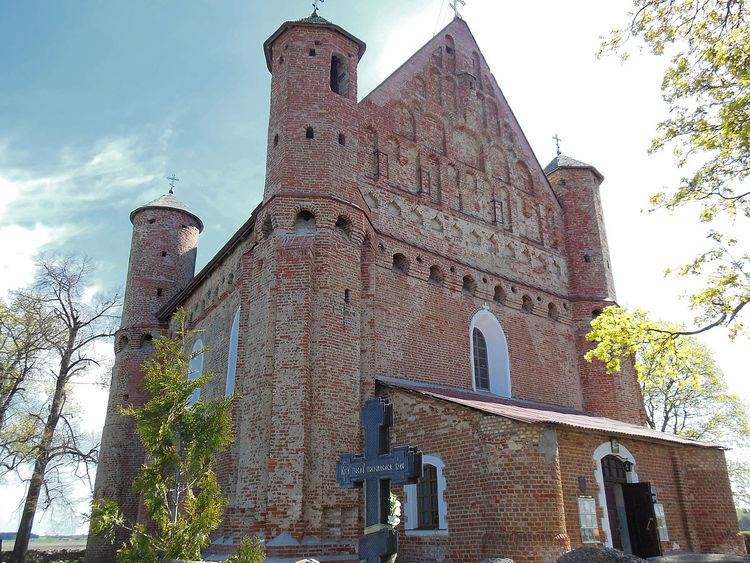 | ||
The term Belarusian Gothic (Belarusian беларуская готыка [belaruskaya hotyka], Russian белорусская готика [belorusskaya gotika]), is primarily used to describe the architectural style of ecclesiastical buildings erected in the 15th and 16th centuries. The style was used in regions of modern-day Belarus, Lithuania, and eastern Poland.
These buildings have elements typical for Gothic architecture designs such as lofty towers, flying buttresses, pointed arches, and vaulted ceilings. They also feature elements that would not typically be considered Gothic by central and western European standards.
Conditions of building
With the baptism of the Grand Prince Vladimir the Great and the "Christianization" of the Kievan Rus, the architecture of the region became heavily influenced by Byzantine architecture.
During the 13th century and the first decades of the 14th century, the principalities in present-day Belarus are eventually subjugated by the Grand Duchy of Lithuania, a pagan state that was expressing resistance against the Catholic Teutonic Order. The Grand Duchy became a dominant power in the 14th century, featuring a developed nobility. The official language was Ruthenian.
After Władysław II Jagiełło was crowned King of Poland in 1386, the countries of Poland and Lithuania united, which caused an increase in communication in western and southern Europe.
During this period, the Gothic style came to the Slavic regions. In central and southern Europe however, it was already being displaced by Renaissance architecture.
Southern Lithuania and Belarus share many of the same architectural features. In 1346 the Orthodox Cathedral of the Theotokos, Vilnius in Vilnius, was constructed. The Gothic style was before the Renaissance style had arrived in central Europe, and was before the Lithuanian state had become a majorly Catholic area..
The Belarusian Gothic shows a merging of Byzantine, Gothic, and Renaissance architectures.
